As we taxied to the terminal, the pilot welcomed us to Abu Simbel and announced the current temperature: 50 degrees Celsius (122 degrees Fahrenheit). It was April 1, 2022 and unseasonably warm in this outpost up close to the border with Sudan.
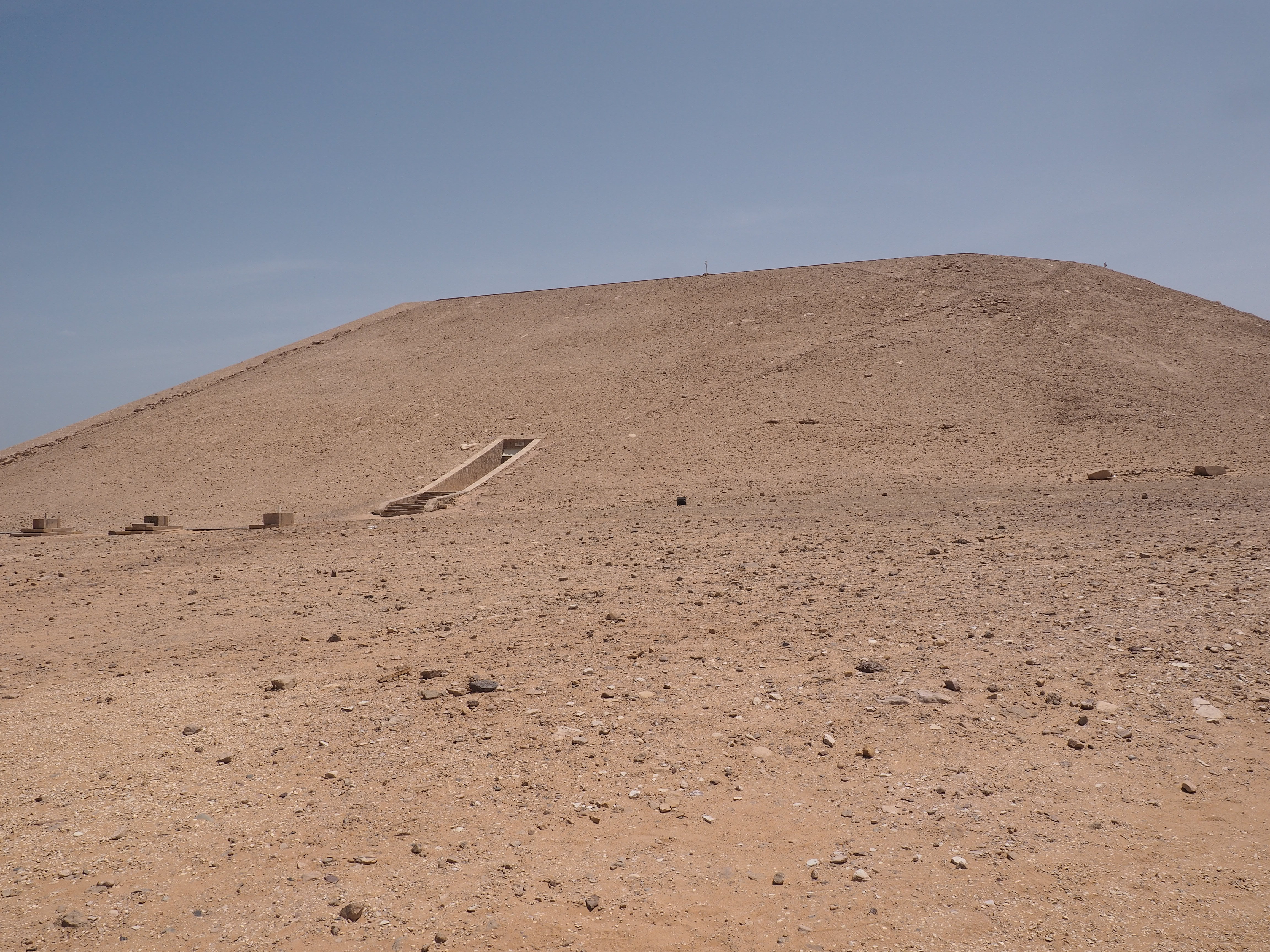
Our destination for the day lay behind this artificial hill, created to accommodate the relocation in 1968 of two massive Nile-side temples built by Ramses II in the 13th Century B.C. It was part of the UNESCO Nubian Salvage Campaign in anticipation of the rise of Lake Nasser when the Aswan High Dam was complete. Because the U.S. provided the lion’s share of funding for the project, the Egyptian government presented the Nubian Temple of Dendur as a gift to the American people. Lyndon Johnson then designated the Metropolitan Museum of Art as the receiving institution.
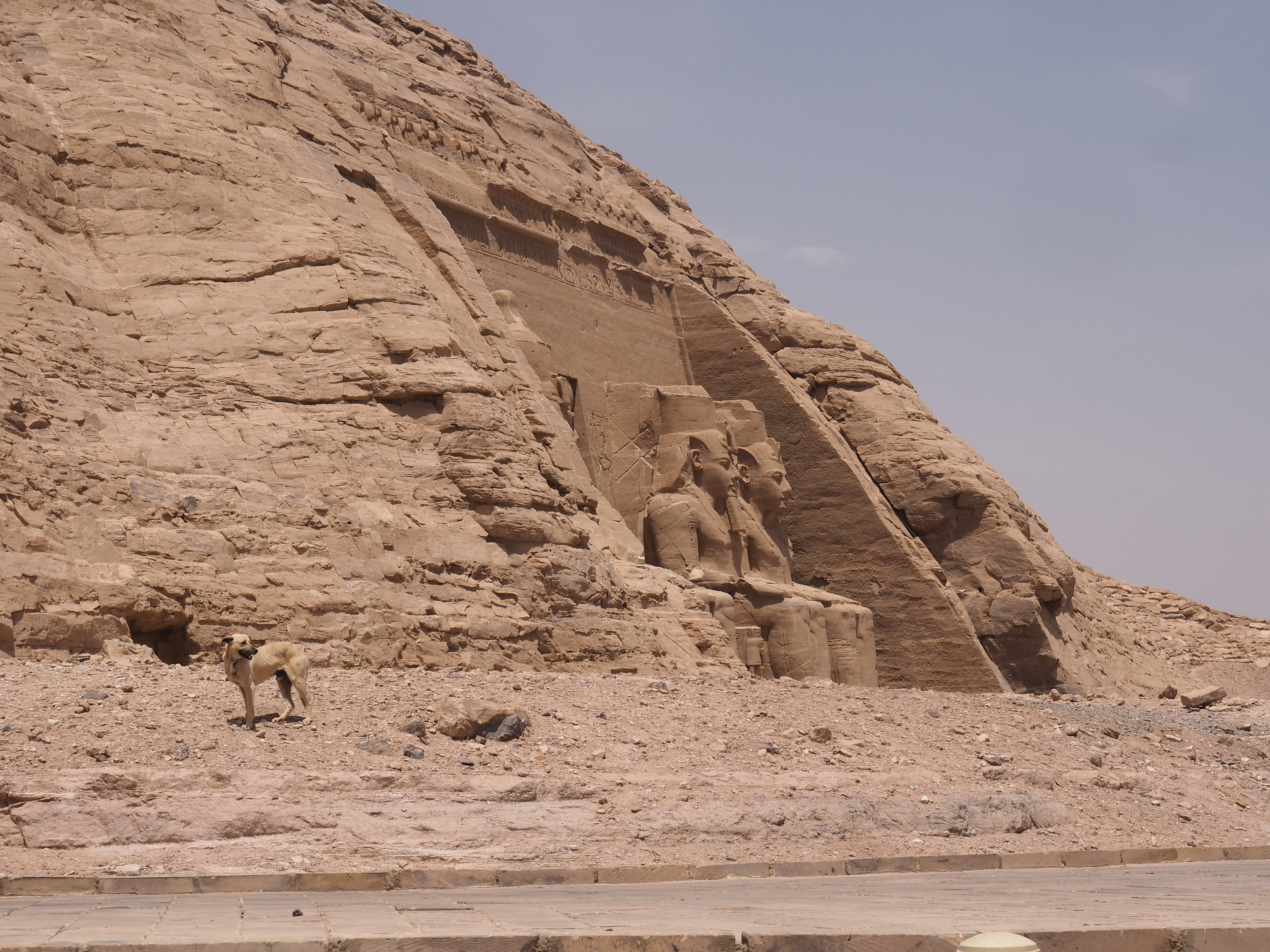
Ramses created the first of these temples to celebrate his victory in the battle of Kadesh and as a warning to the Nubians to stop harassing his southern border. The second temple was a tribute to his favorite wife, Nefartari.

Imagine rounding a bend in the river as part of a raiding party and coming upon these stupendously imposing monuments to power and the imposition of will; four of Ramses the Great, sitting calmly. His strategy actually worked. Troubles from the south dropped precipitously during his long reign.
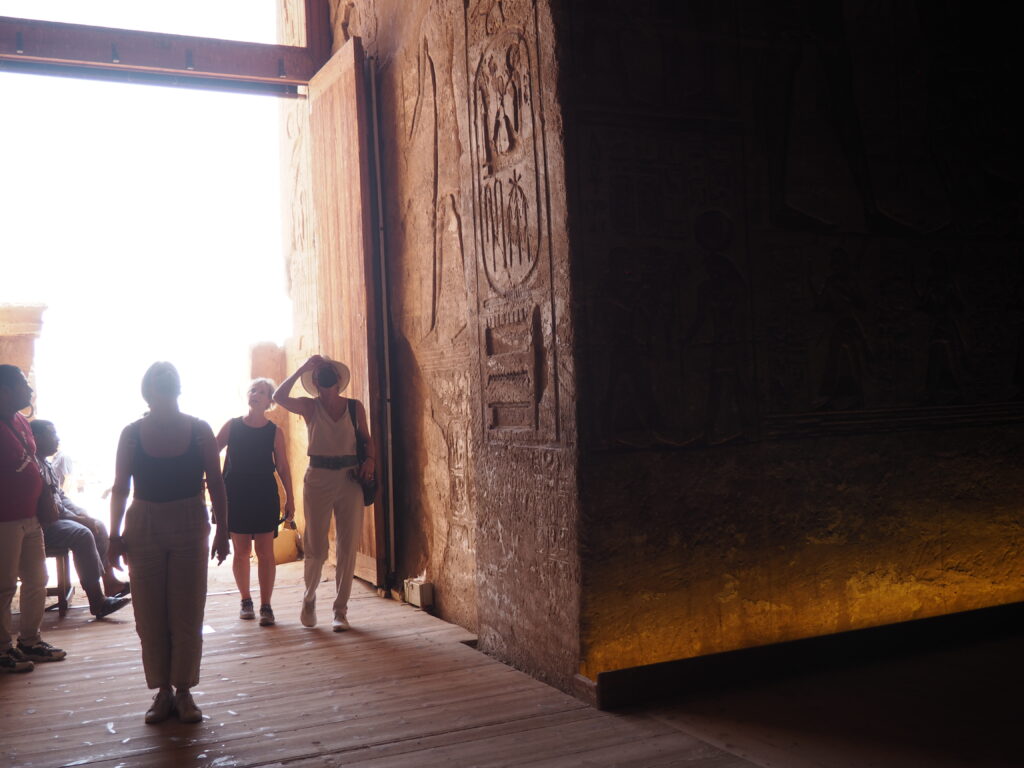
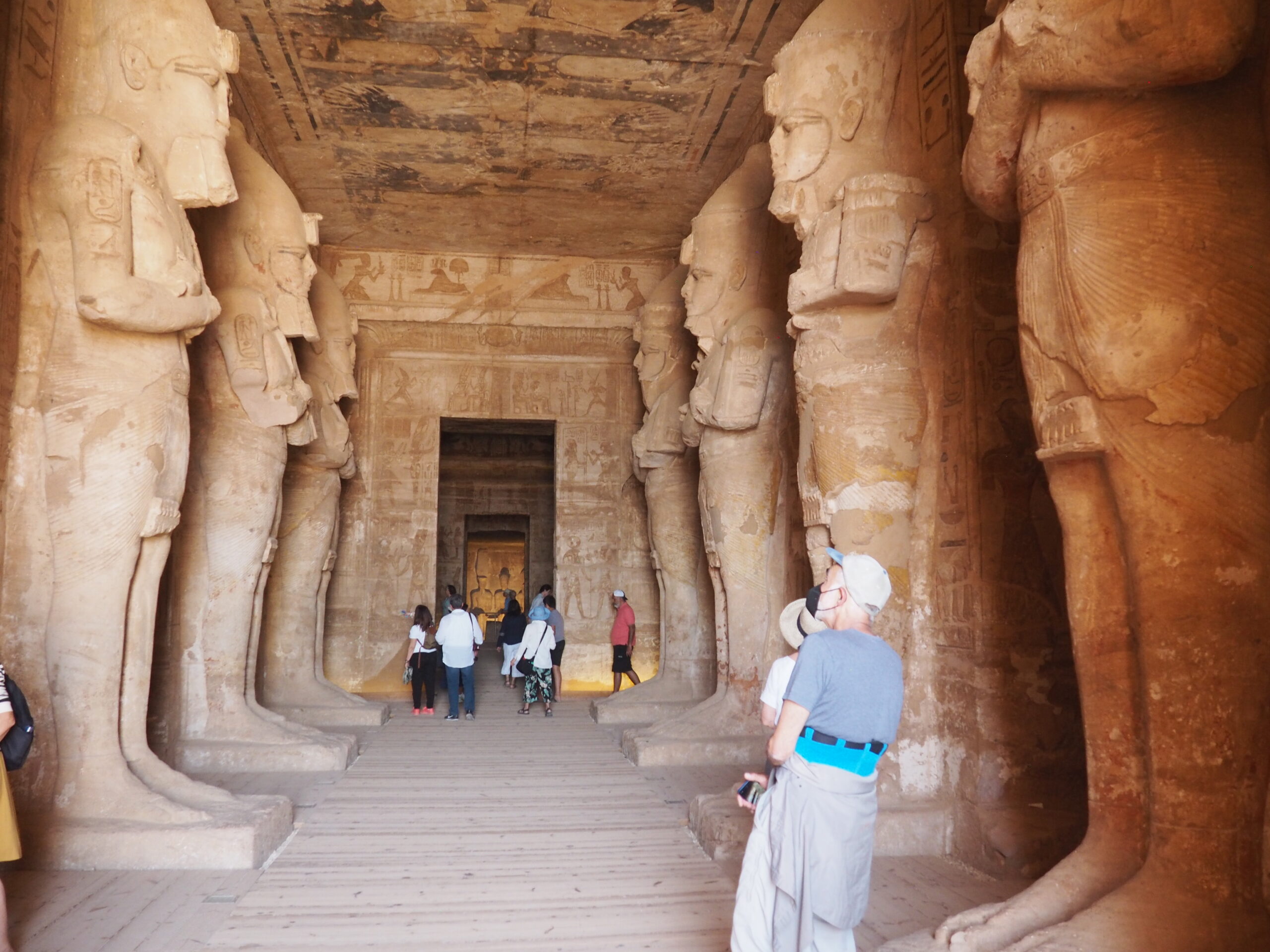
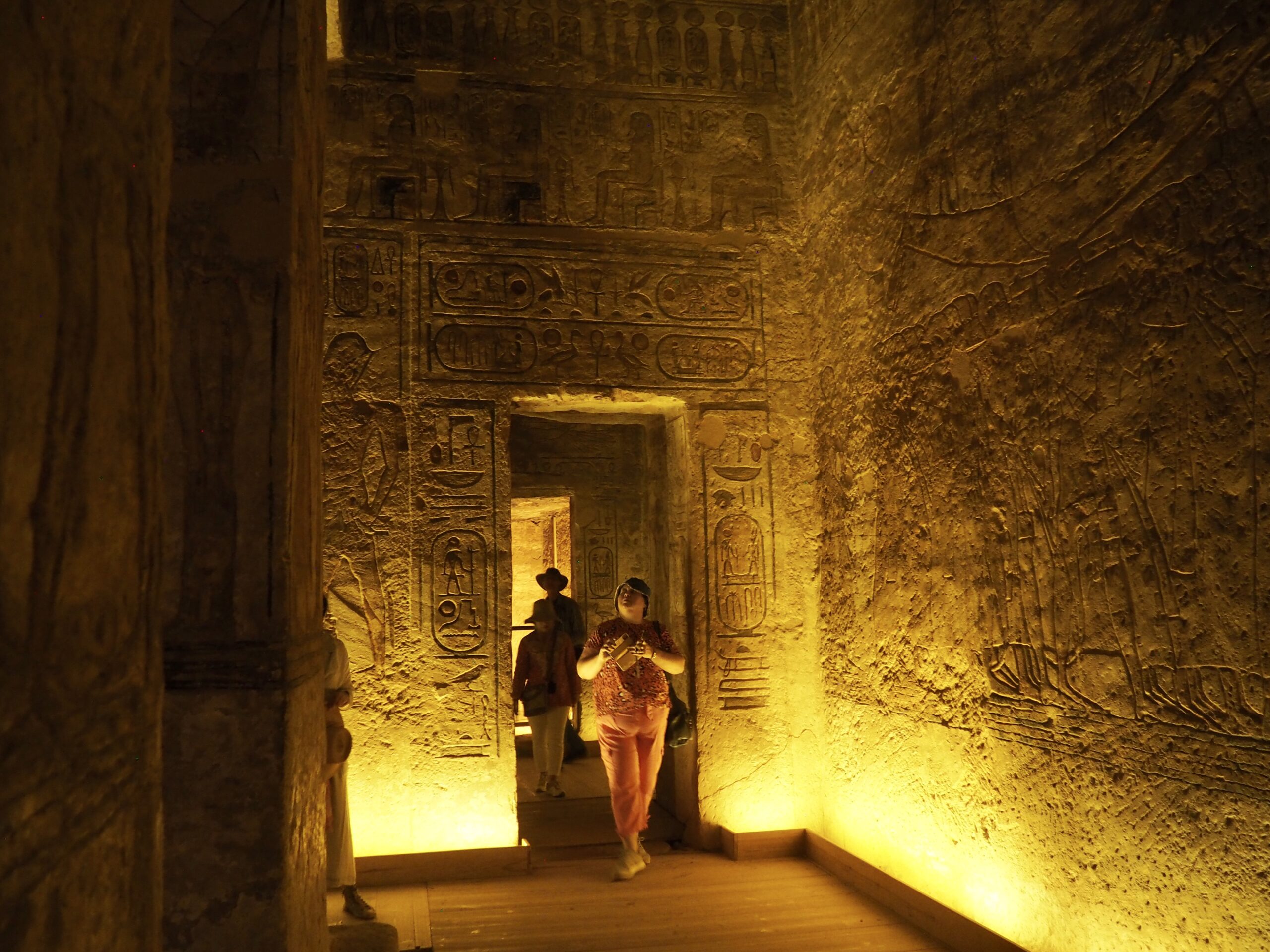

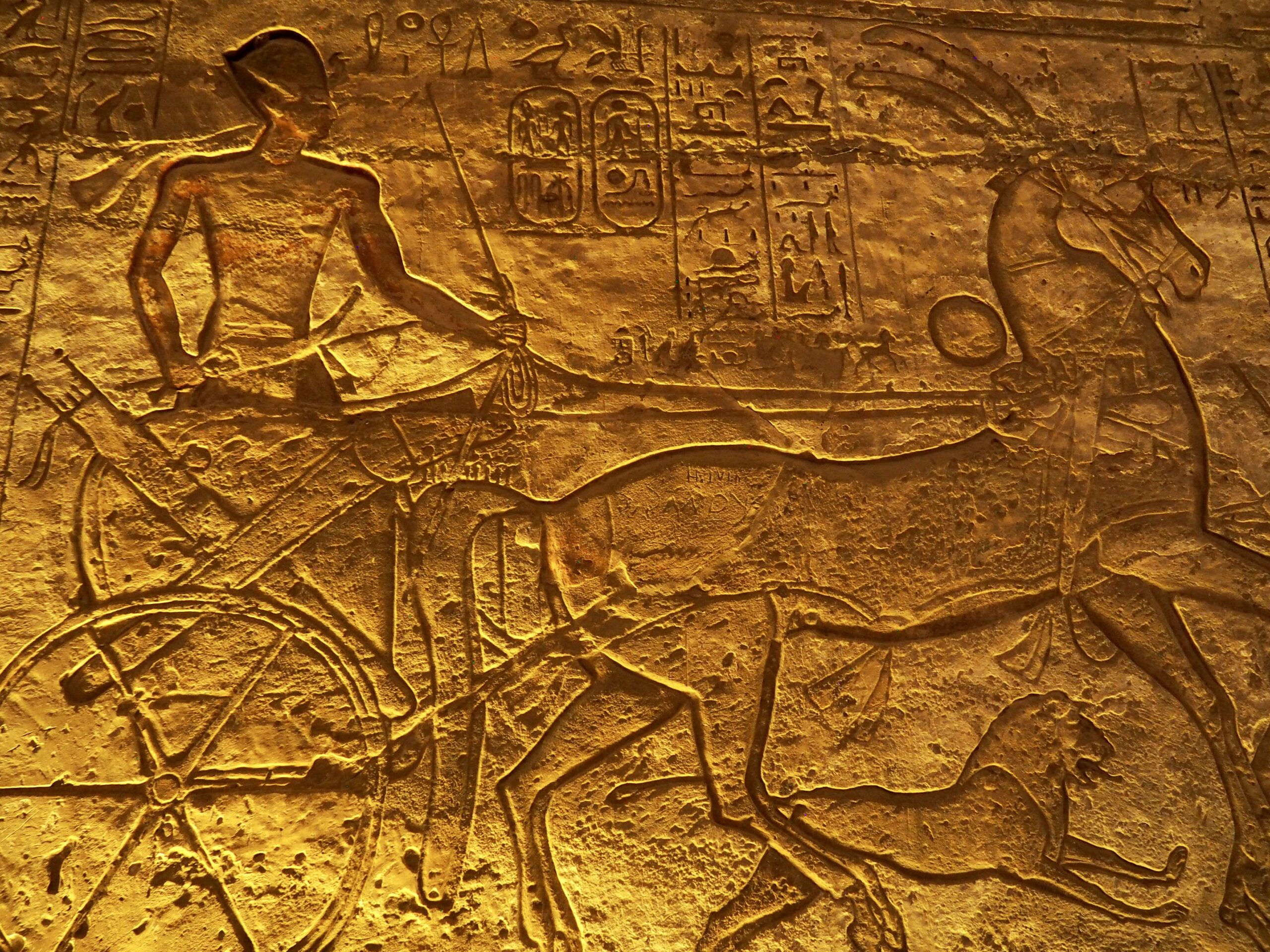
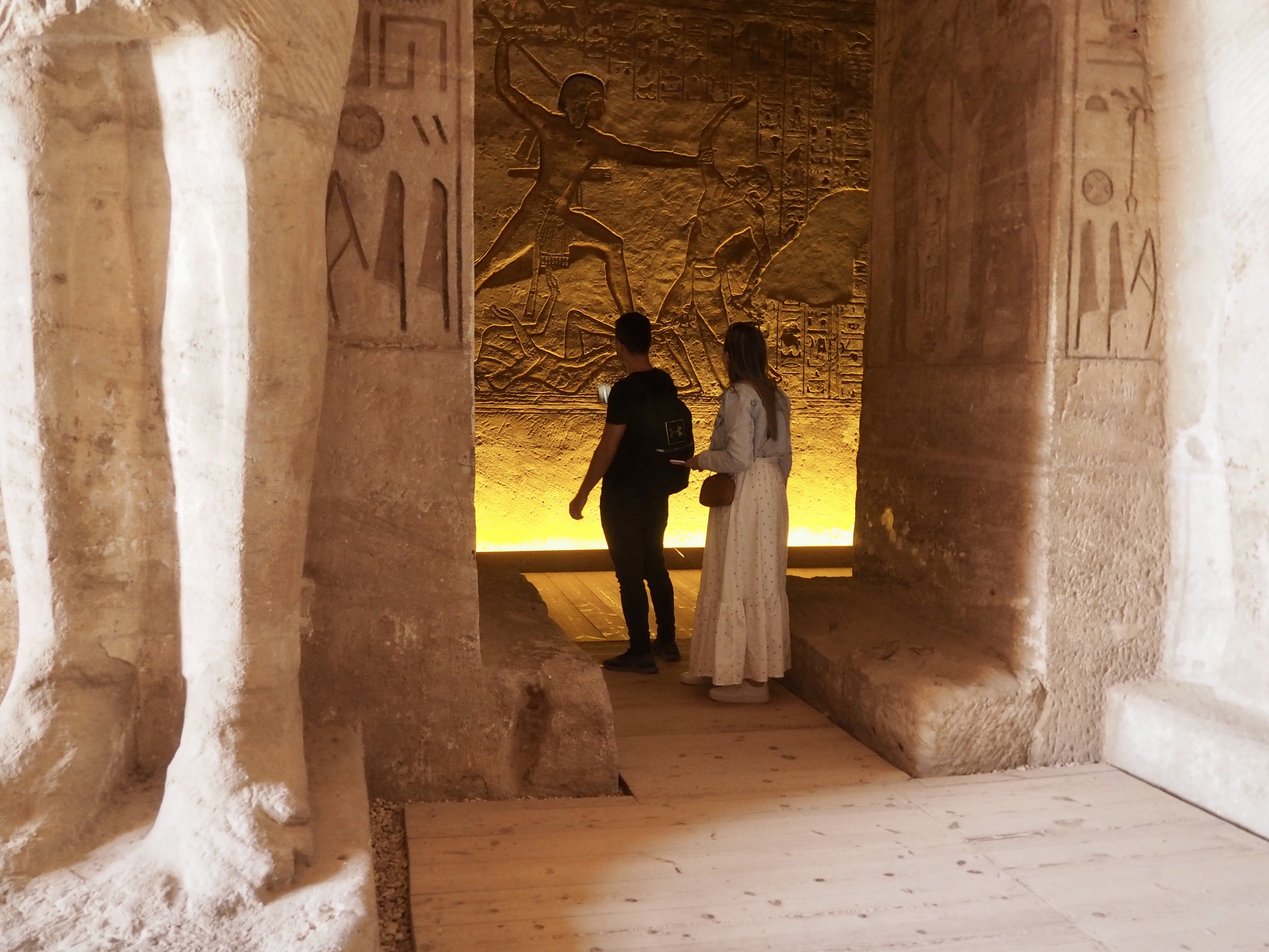
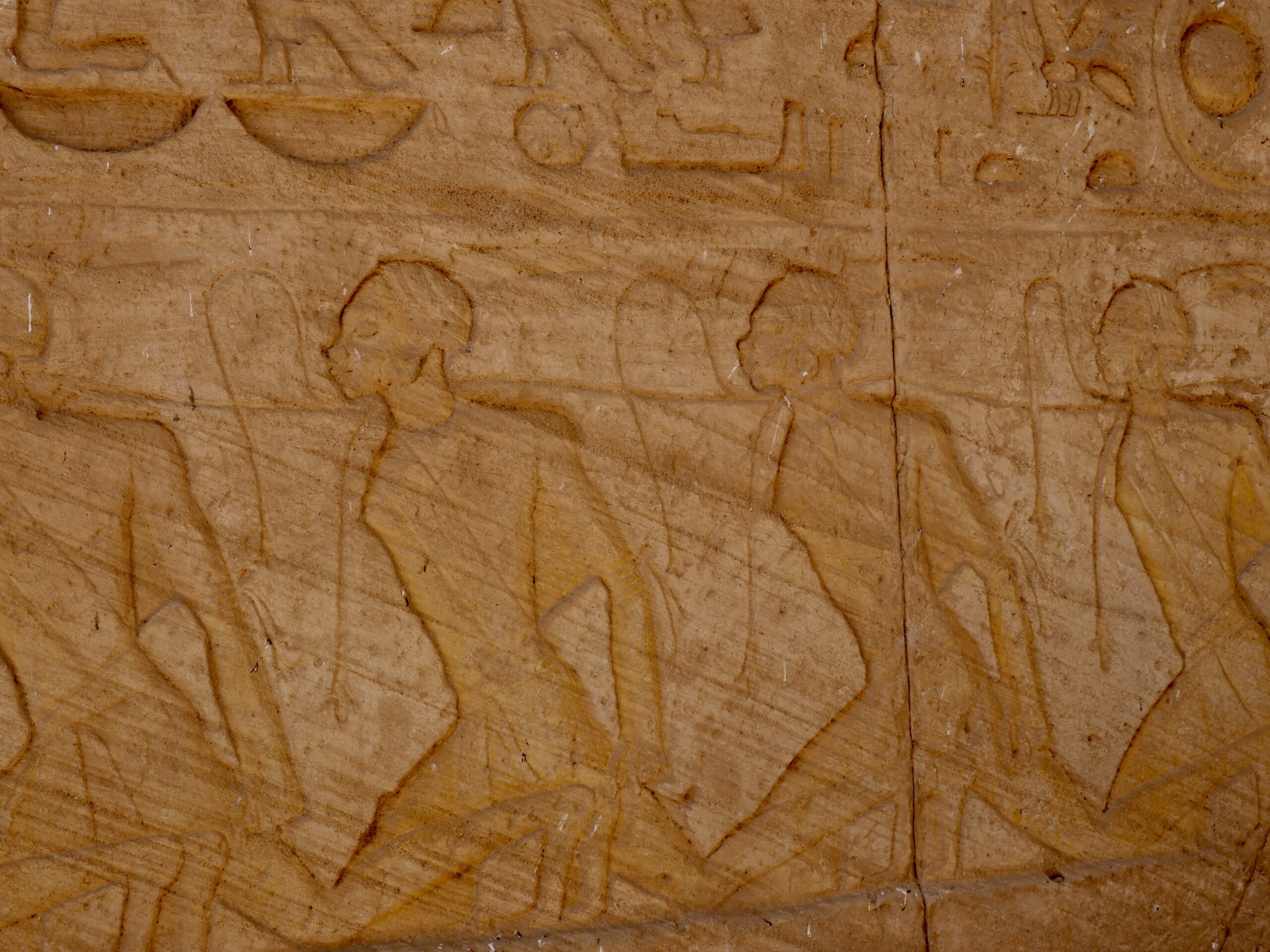


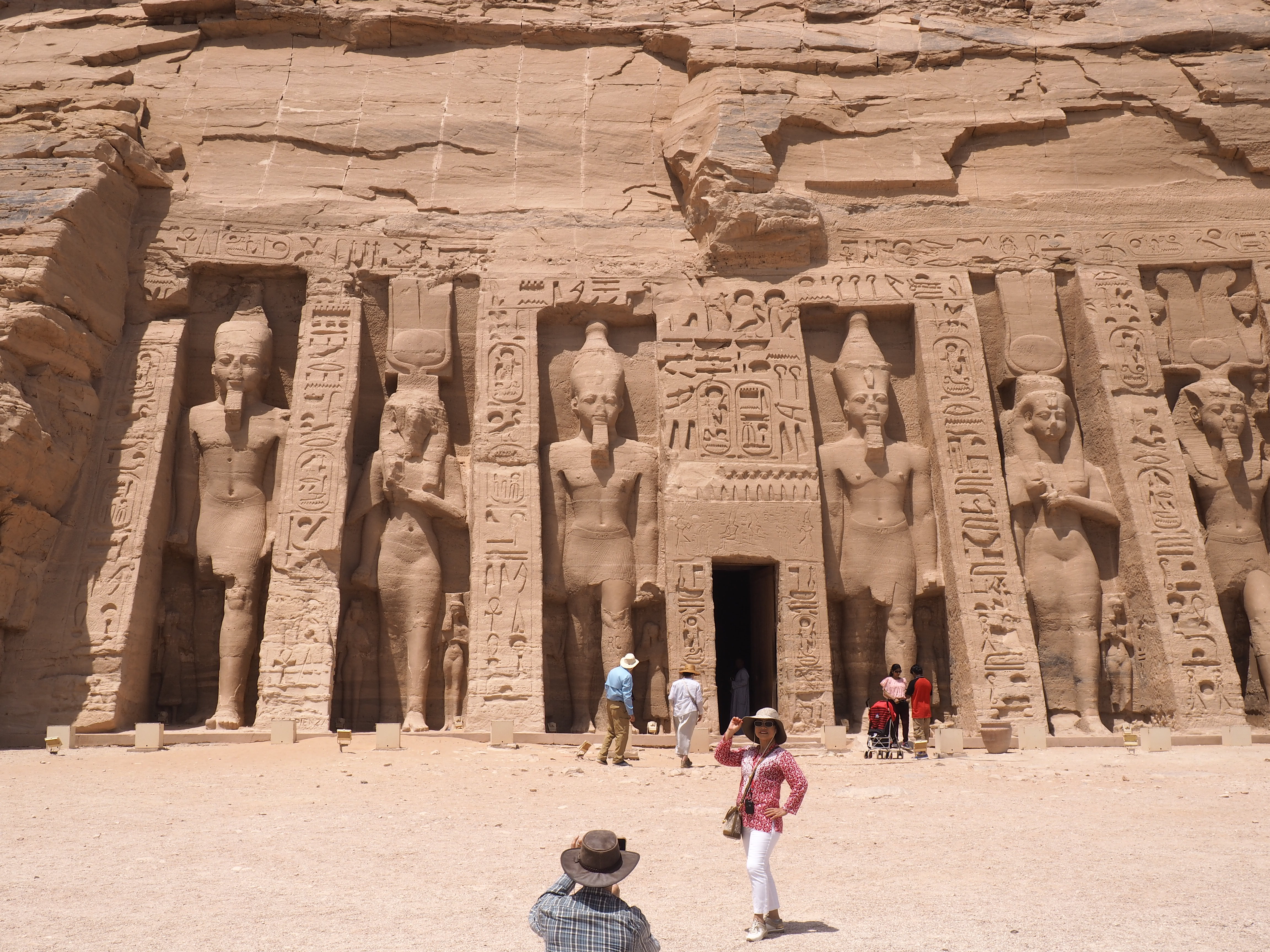
Meanwhile, next door at the temple Ramses built in tribute to his Queen Nefartari, the theme is a little more mellow, although Ramses remains the main idea interspersed with what looks like representations of Nefartari with a child next to her and holding something in her left hand. The more you look the more you notice (and, we’re most likely wrong).

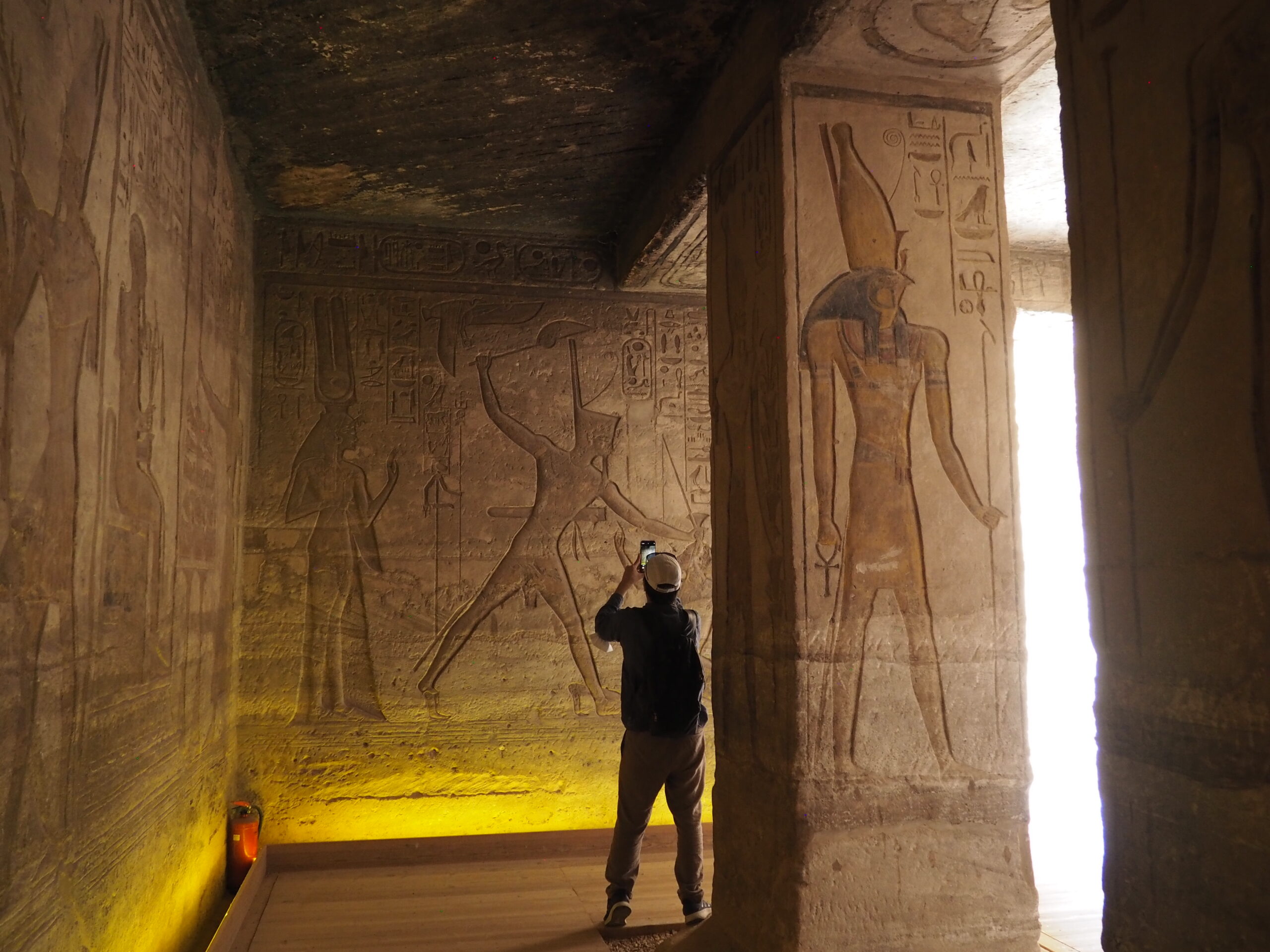
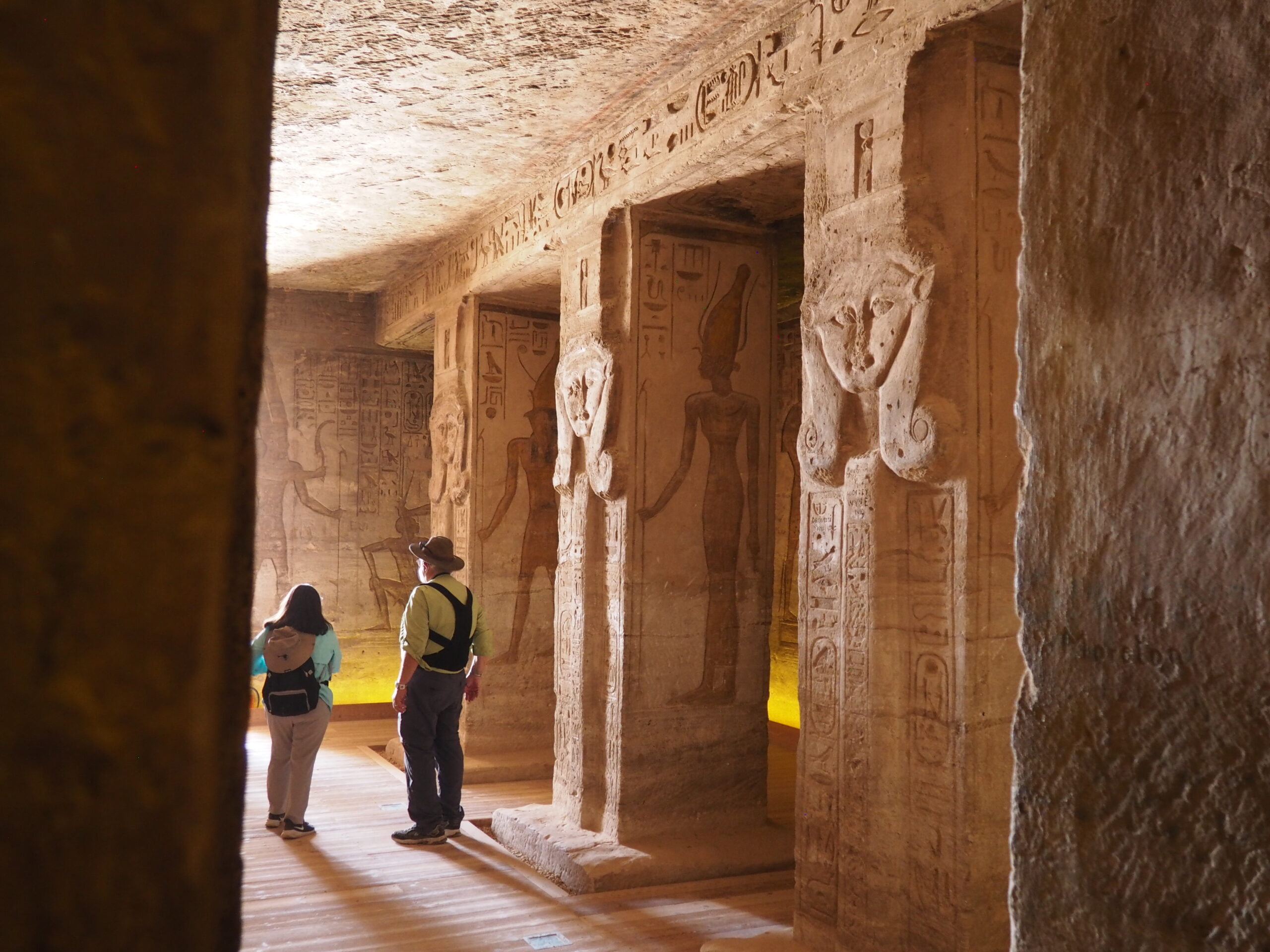
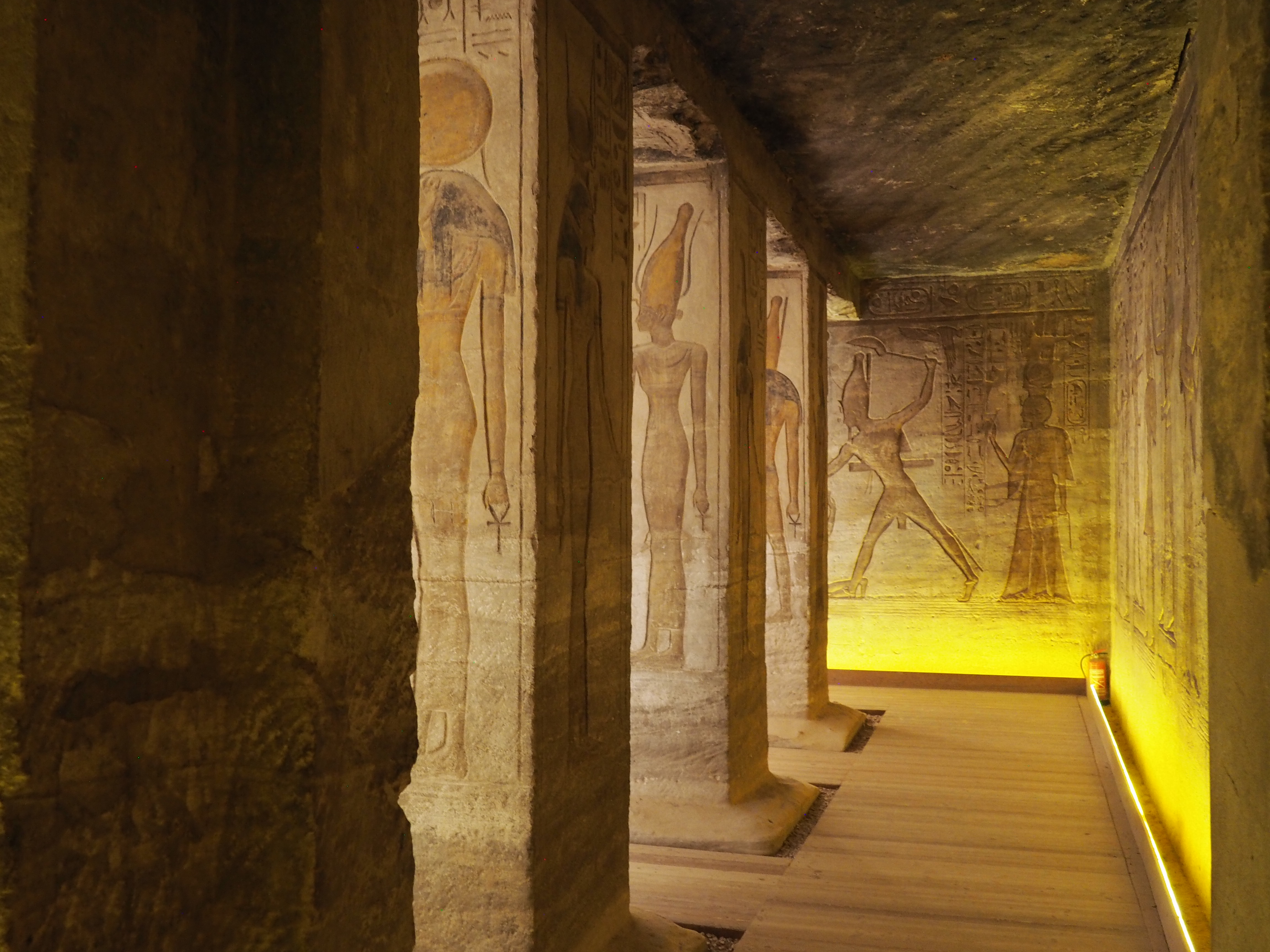
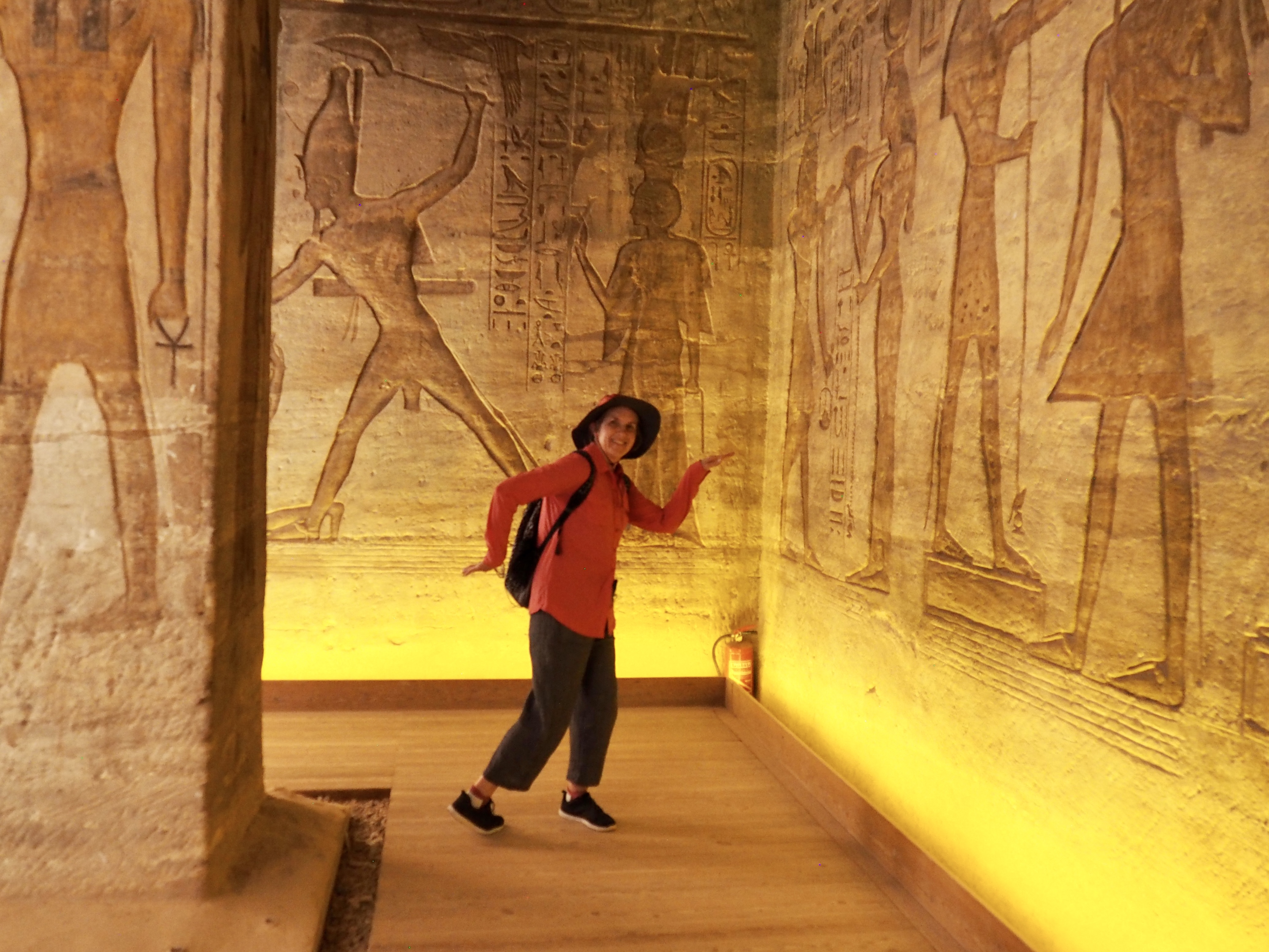
It’s a nice little temple and quiet enough to practice walking like an Egyptian.

